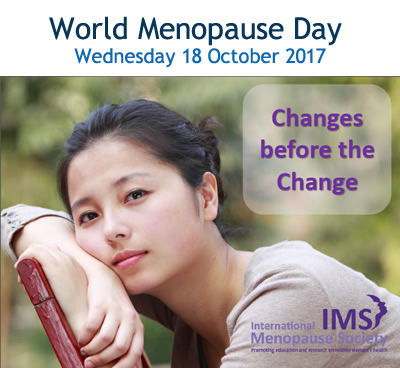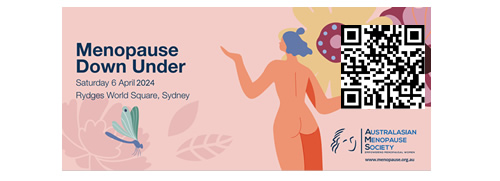18 October 2017
Changes before the Change: Perimenopausal bleedingAlthough some women may abruptly stop having periods leading up to the menopause, many will notice changes in patterns and irregular bleeding. |

For World Menopause Day this year the International Menopause Society (IMS) is highlighting perimenopausal bleeding.
Many women experience Abnormal Uterine Bleeding (AUB) during perimenopause. AUB is defined as bleeding that differs in frequency, regularity, duration or amount to your regular menstrual bleeding. [1] Changes to the menstrual cycle often carry no significant consequences [2]; however, they could have a range of causes. Although it may simply be a symptom of perimenopause, it is still sensible to raise the issue with your healthcare professional. A thorough history and physical examination will indicate the cause of uterine bleeding and help discern the need for further investigation and treatment. [3] Other investigations for abnormal uterine bleeding include a PAP Smear, Endometrial or Uterine Sampling (Endometrial Biopsy), a Vaginal Ultrasound (Echography) and routine laboratory testing.
White Paper
Abnormal uterine bleeding is one of the commonest presenting complaints encountered in a gynecologist's office or primary-care setting. The wider availability of diagnostic tools has allowed prompt diagnosis and treatment of an increasing number of menstrual disorders in an office setting. In the White Paper: Abnormal uterine bleeding in perimenopause the advantages and disadvantages of transvaginal ultrasound, blind endometrial sampling and diagnostic hysteroscopy are reviewed. Once a proper diagnosis has been established, appropriate therapy may be embarked upon.
![]() A White Paper - Abnormal uterine bleeding in perimenopause913.92 KB
A White Paper - Abnormal uterine bleeding in perimenopause913.92 KB
The IMS grants permission to individuals only to reproduce the copies of the review for their own personal use but requests that organisations contact Ms Lee Tomkins, IMS Executive Director for advice on how to order reprints at This email address is being protected from spambots. You need JavaScript enabled to view it..
A short accompanying slide kit, Changes before the Change for physician education has also been produced.
![]() Changes before the Change Presentation408.00 KB
Changes before the Change Presentation408.00 KB
Patient Information Leaflet
A patient information leaflet: Changes before the Change has been developed.
This Patient Information Leaflet is a guide to Perimenopausal Bleeding, its causes and the treatments available as well as a call to women entering mid life to ensure they seek professional advice if they have any concerns about Abnormal Uterine Bleeding as it can be a symptom of other more serious conditions.
![]() Changes before the Change1.06 MB
Changes before the Change1.06 MB
References
- The American College of Obstetricians and Gynecologists (March 2017). "Frequently Asked Questions FAQ095 Gynecologic Problems: Abnormal Uterine Bleeding". www.acog.org/-/media/For-Patients/faq095.pdf?dmc=1&ts=20170530T2118409798 (Cited May 2017).
- (2016). "Abnormal Uterine Bleeding". Journal of Midwifery & Women's Health, 61(4). 522-527.
- Singh S, Best C, Dunn S, Leyland N, Wolfman WL, et al (May 2013). Clinical Practice – Gynaecology Committee. "Abnormal uterine bleeding in premenopausal women". Journal of Obstetrics and Gynaecology Canada, 35(5):473–479.






